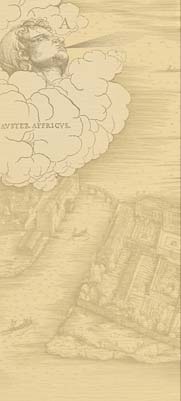Navigation: Portolans
From ancient times, mariners sailed the same routes again and again, accumulating increasingly precise knowledge of various coasts, distances, hazards, and landmarks. During the Middle Ages, this kind of knowledge was written down in texts known as portolans (not to be confused with portolan charts, or maps).
Michael's manuscript contains three groups of portolans.
The first group (118b-127a; ![]() 120a, 125b) begins with instructions for entering the port of Venice. It contains the portolan of pilot Zuan Pires, an otherwise unknown man who was probably Spanish or Portuguese, concerning ports and harbors from Cadiz to the English Channel. It includes soundings in the Channel, information on the tides, and notes about the best way to enter several Atlantic harbors. This material is all related to the voyages of the galleys of Flanders that Michael made many times.
120a, 125b) begins with instructions for entering the port of Venice. It contains the portolan of pilot Zuan Pires, an otherwise unknown man who was probably Spanish or Portuguese, concerning ports and harbors from Cadiz to the English Channel. It includes soundings in the Channel, information on the tides, and notes about the best way to enter several Atlantic harbors. This material is all related to the voyages of the galleys of Flanders that Michael made many times.
Much later in Michael's text is a second group of texts comprising a portolan of the Italian coast from Manfredonia to Otranto (190b-192b; ![]() 192b), as well as one for the Gulf of Salonika (192b-193b;
192b), as well as one for the Gulf of Salonika (192b-193b; ![]() 192b), where Michael often sailed and fought between 1423 and 1430. It may be significant that Manfredonia was the port in which Michael says the first boarded a Venetian ship (he refers to it as "the time in which I came to Venice").
192b), where Michael often sailed and fought between 1423 and 1430. It may be significant that Manfredonia was the port in which Michael says the first boarded a Venetian ship (he refers to it as "the time in which I came to Venice").
The third section of portolans (205a-210b) comes at the end of the manuscript. It consists of portolans for coasts from Venice to Constantinople and Tana, for the coast of the Adriatic, and for the coasts and islands from Greece to Cyprus. These portolans were written by someone other than Michael, as the different penmanship, ink, and pagination makes evident, after Michael's death, although there is no way to determine exactly when.
Many of Michael's portolans are simple lists. Here, for example, are two lines from Michael's portolan for the Atlantic coast (![]() 120a):
120a):
Trafalgar and Cabo de Santa Maria, levante sirocho, 3 leagues.
Cabo de São Vicente and Tavira, levante sirocho, 12 leagues.
It gives the wind direction (from the windrose) and the distance between two points.
Others portolans are significantly more detailed. Here, in a rough translation, Michael describes the entrance to the port of Sluys (![]() 125b), not far from Bruges:
125b), not far from Bruges:
To enter the port of Sluys, that is of Flanders, you will keep on the quarter of ponente al maistro until you reach the bell tower of St. Catherine, with a muzzle-shaped bell tower. You will see it on the landward side, and then enter ponente maistro until the bell tower of St. Catherine, with a bell tower that appears to landward. And like the bell tower, and if it is that small one, turn to the right. You will see a tower on that side which lines up with the center of the black bridge, and thus you will know that you are outside the bank and will find water six paces deep. And thus, you will do the opposite when you want to enter by avoiding the banks.
Details like these represent the recorded experience of mariners over the years. But no mariner of Michael's time would have trusted his life to what was written down on paper. Indeed, Michael's own portolans contain many mistakes about distance and direction that would have put his ship in grave danger if followed to the letter.
Accordingly, although portolans may well have been useful in planning voyages, anticipating dangers, and recognizing unfamiliar landmarks, they could never substitute entirely for actual individual experience. They were useful for navigating, but only as part of a system that could compensate for their weaknesses.











